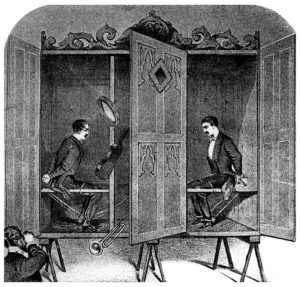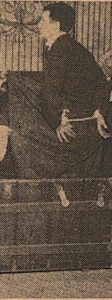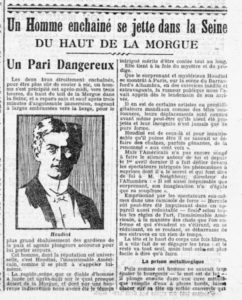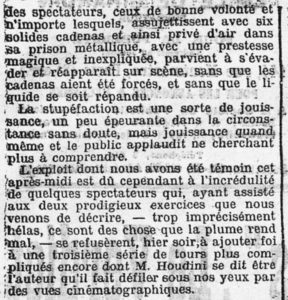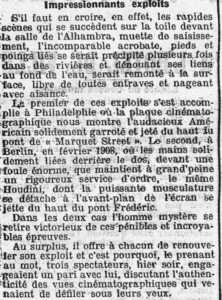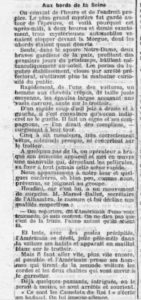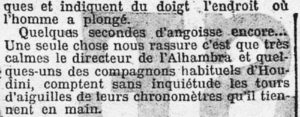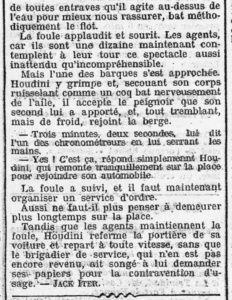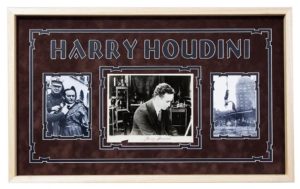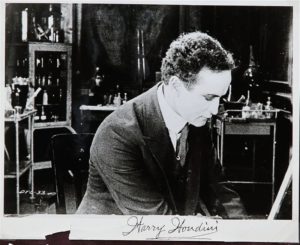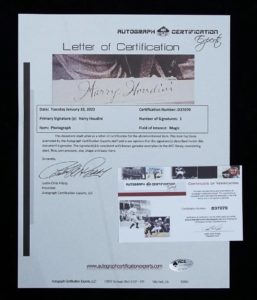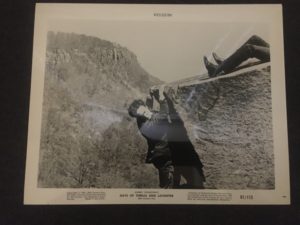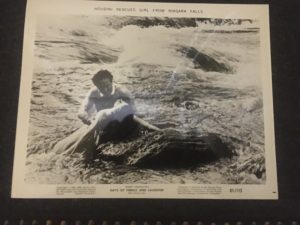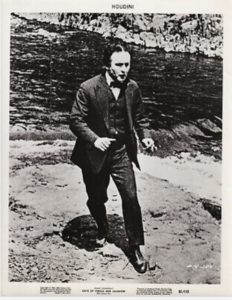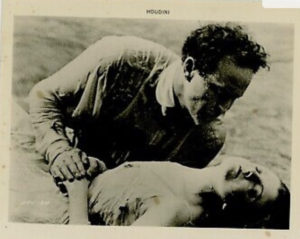Last year I acquired the 1924 newspaper article, Houdini Breaks into Playwriting, describing a new stage play adapted from The Grim Game.
- WILD ABOUT HARRY: The Grim Game on stage? (wildabouthoudini.com)
- Houdini Adaptations – Arthur B Reeve | harryhoudinicircumstantialevidence.com
Houdini actually broke into playwriting (if you can call it that) between 1911 and 1914 where he registered three of his famous illusions as “playlets” or short plays, with the U.S. Copyright Office. These deposited scripts are now held within the Reader’s Collection, Library of Congress Copyright Office Drama Deposits.
The three playlets were also published in the Linking Ring [Jun to Aug 1967] and Patrick Culliton’s books, Houdini’s Strange Tales – A Collection of fiction by the legendary Harry Houdini [1992], “Houdini Unlocked”[1997], and “Houdini – The Key” [2010]
Edgar Heyl says: “these plays are unbelieveable bad. Yet Houdini barged right ahead in writing them, completely oblivious of plot, motivation, characterization, credibility, reality and the many other factors that make the work of a professional playwright so difficult.”[Linking Ring August 1967]
This post kicks off a 3 part series of posts where I summarize and share tidbits about the three copyrighted plays that he wrote:
- Challenged or Houdini Upside Down (Copyrighted August 1, 1911)
- Walking Through a Brick Wall (Copyrighted July 15, 1914)
- Buried Alive (Copyrighted September 9, 1914)
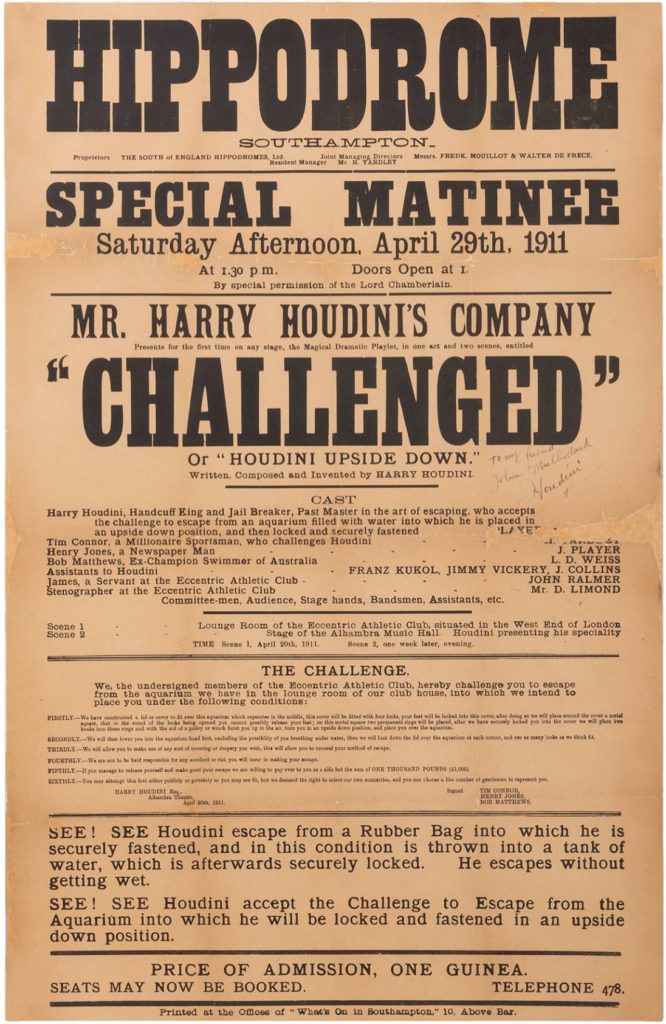 Today we look at Challenged or Houdini Upside Down
Today we look at Challenged or Houdini Upside Down
Houdini wrote the play in England. The title sheet of the manuscript states Written and composed by Harry Houdini c/o Day’s agency, Effingham House, Arundel Street, Strand, London, W.C. . The registration describes the work as a “magical dramatic playlet” in sixteen double-spaced typewritten octave pages.
On Saturday, April 29, 1911 Houdini gave a special matinee performance at the Hippodrome, Southampton. Above is the one of kind broadside (sold for $18K at Potter & Potter) advertising this performance.
SUMMARY
The first act depicts a group of men talking about Houdini’s amazing abilities, integrity, and willingness to take on challenges. By the second act, Houdini (played by himself) accepts their challenge and, according to the script, “HOUDINI MAKES HIS ESCAPE” and the crowd gives “Three cheers for Houdini, Hurrah, Hurrah, Hurrah.”
[Houdini and the Magic of Copyright by Marilyn Creswell (March 24, 2021)]
Per Culliton:
The story goes that the playlets single performance had only one spectator. This could well be true, since there was virtually no advertising and the price of admission was a steep one guinea – but this was not the commercial venture, nor was it any sort of serious attempt, at playwriting. Houdini had developed his greatest theatrical piece: The Chinese Water Torture Cell, and to protect it, he copyrighted it as a play. “I wish to give notice,” he wrote “that I have SPECIAL LICENSE FROM THE LORD CHAMBERLAIN as a Stage Play and will certainly stop anyone infringing on my rights.”
Per Edgar Heyl:
The most interesting about this play is not just the fact it was built around Houdini’s famous Chinese Water Torture Cell escape, but that it was not until some two years [one and half] later he first performed the illusion! In this period he must have continued to work on refinements of the equipment until it was as fool-proof as anything else he did on the stage. Its first performance (and not in in the form of a play) was in mid-September,1913 [Fri., Sept. 21, 1912] in Nuremberg [Circus Busch, Berlin, Germany] It was an immediate success and became a feature of his show for the rest of his life. [Linking Ring June 1967]
BONUS:
Below is the actual challenge from the play:
Dear Sir,
We the undersigned members of the Eccentric Club, hereby challenge you to escape from the aquarium we have in the lounge-room at our clubhouse, into which we intend to place, you, under the following conditions:
First of all, we have constructed a lid or cover, to fit over this aquarium, which separates in the middle, as per drawing herewith:
This cover will be fitted with four locks, such as are used on traveling trunks, with long brass hasps. We intend locking your feet in this cover, after which we place around this cover a metal square so that, even if the locks were opened, you could not possibly release your feet.
On this metal square we will have rings placed and, after we have you securely locked into this cover, we will place two locks in these rings, fastened to a cable and, with the aid of derrick or winch, we will hoist you up into the air, turn you in an upside-down position, and place you over the aquarium.
We will then lower you down into the aquarium, head first. Excluding the possibility of your breathing when under water, we will proceed to lock the lid down to the aquarium at each corner, making use of our locks and as many of these as we see fit.
We will allow you make use of any covering or drapery you wish, and allow you in this way to conceal your methods of escape.
In the event of any accident occurring which will prevent your making your escape, we are not to be held responsible for this accident in any shape or form.
If you manage to release yourself and make your escape, we stand willing to pay the sum of L1,000 which we have deposited as a side-bet. You may attempt this feat either publicly or privately, as you see fit. We demand the right to select our own committee, and you can select a like number of gentlemen to represent you.
Trusting to hear from you, we remain
Special Thanks to the late George Goebel for sharing the play with illustrations during our very special visit.




